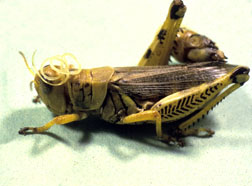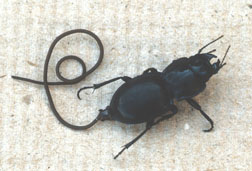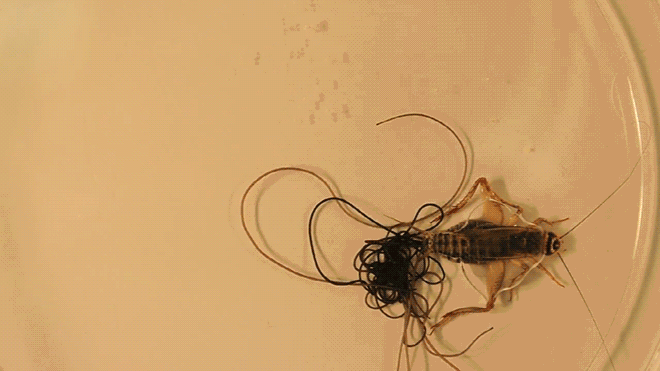Its so sad to have to say goodbye to such an interesting species. If you were intrigued by the facts presented in this blog please join me for one last journey.
“A new species of Gordius (Phylum Nematomorpha) from terrestrial habitats in North America”
Contributors: Christina Anaya1, Andreas Schmidt-Rhaesa2, Ben Hanelt3, Matthew G. Bolek1 (1)
Christina Anaya and her peers decided to conduct research on the species of Gordius. The purpose of this research was to determine how the morphology (of both adult and non-adult stages), reproduction, and other characteristics of this species contributed to the environment in which the lifestyle was carried out. They used this research to compare the uniqueness of the Gordius species from the other species that fell under the Nematomorpha phylum as well. They hypothesized that, “The consistent occurrence of this gordiid in terrestrial habitats, along with its distinct egg morphology, suggests that this new species of hairworm has a terrestrial life cycle.”
A few keywords you may need to know before diving into this literature are as follows:
1.Paragordius/Gordiida- freshwater horsehair worms of the Nematomorpha Phylum
2.Nematomorpha- a small phylum that comprises the horsehair worm; possession of a true body cavity, gonads discontinuous with their ducts, and an atrophied digestive tract in the adult
3.Terrestrial- of or relating to the earth or its inhabitants
4.Cysts- a closed sac having a distinct membrane and developing abnormally in a cavity or structure of the body
5. Larvae – the active immature form of an insect, especially one that differs greatly from the adult and forms the stage between egg and pupa, e.g. a caterpillar or grub.
In this research the worms were collected from terrestrial environments and observed for any morphological similarities and/or differences. The male, female, and non adult (cysts and larvae) forms were studied with microscopy. As a result, it was discovered that the larvae development showed something not seen before in this species. The fully developed larval eggs had space between what appeared to be an egg shell and the thick inner membrane.
The introduction of the thick membrane is unique to the Nematomorpha phylum as opposed to the thin membrane that most are accustomed to. Another unique characteristic is that the adult males have a unique row of bristles on the ventral inner side of each tail lobe and a circular pattern of bristles on the terminal end of each lobe, which distinguishes them from all other described North American species of Gordius. The egg string, larval, and cyst morphology of this new species conform to previous descriptions of non-adult hairworm stages. However, only one report of this species showed egg string depositing in a terrestrial habitat. With the small amount of evidence showing that there is evidence of terrestrial hair worms and a small portion showing larvae with the thick membrane; the research hypothesized that the introduction of this new characteristic may have some contribution to the terrestrial habitats of this species. Further research may be helpful in obtaining a conclusion on if the terrestrial habitat is an event of the thicker membrane beneath the shell layer of the larvae.
These findings are unique to this species due to the introduction of the thicker membrane that no other species within the phylum carry. They feel that this introduction may have some form of contribution to the terrestrial invasion that this species demonstrates. I believe that these findings just go to show that new adaptations come and are passed on for the better of a species. Evolution is inevitable, evolution is mostly beneficial, and evolution can explain the why’s and how’s to many of the changes we see today across all species. Theodosius Dobzhansky once said, “Nothing in Biology Makes Sense Except in the Light of Evolution.” I truly believe this quote shows how much impact evolution has in the world today.
Citations:
1. Anaya C, Schmidt-Rhaesa A, Hanelt B, Bolek MG (2019) A new species of Gordius (Phylum Nematomorpha)
from terrestrial habitats in North America. ZooKeys 892: 59–75. https://doi.org/10.3897/zookeys.892.38868
 (3)
(3) (3)
(3)

 (
( (
( (2)
(2) (3)
(3)